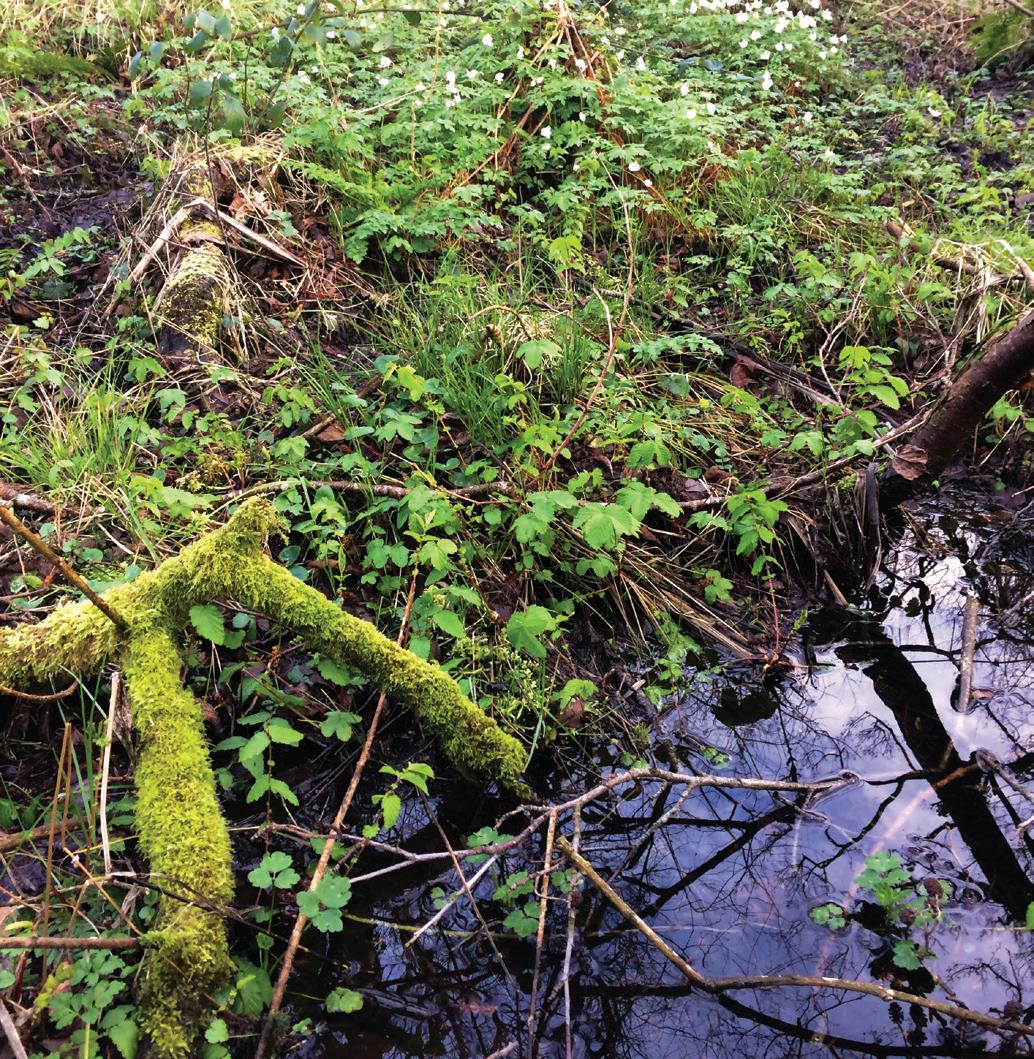
4 minute read
AUTUMN FOCUS
A Walk Woods in the
Our native woodlands off er huge value when it comes to biodiversity, not to mention inspiring wildlife and trees. Richard Nairn takes a walk through Wicklow’s backroads.
Ientered the woodland just after dawn to the sound of a great spotted woodpecker drumming high above in the alder trees. For weeks I had been listening to this iconic sound, but had not managed to see any of these recent colonists to Ireland. Then, suddenly, there was a woodpecker in the tree above my head giving a loud “pik-pik-pik” alarm call. I knew that I must be near the nest, so I hid beneath some foliage and waited. Then the adult bird, in striking black, white and red plumage, landed on a nearby tree with a beak-load of big white grubs, which it promptly delivered to a chick poking its head out of the nest hole.
This is a fragment of old native woodland in a river valley that forms one boundary of our family farm in east Wicklow. Because the ground is permanently wet, the tree canopy is dominated by alder but there is plenty of willow, ash, holly, birch, hazel and oak on the drier slopes. As well as regular winter flooding when the river overflows its banks, the ground is also kept damp by the trickling streams that come from groundwater springs on the slopes above.
Woodpecker at nest nole, credit Richard Nairn

Riparian (or riverside) woodland has huge benefits for biodiversity both on the land and in the water. The roots of the trees intercept nutrients draining off agricultural land in the catchment, trapping these in the woodland soil. Studies in the USA have found that streamside forests are very effective at removing excess nutrients and sediment from surface runoff and shallow groundwater with up to 90% reductions in nitrate concentrations measured in rivers

Wicklow riparian woodland, credit Richard Nairn
flowing through woodland in Illinois. Riparian woods can also ameliorate the effects of many pesticides and provide food for aquatic creatures maintaining high biological productivity and diversity in rivers and streams that pass through them.
I knew that there were trout in our river, but imagine my surprise when a sensor camera that I was using to film badgers showed the distinctive outline of an otter emerging from the water. These secretive mammals are much more likely to move along a watercourse in search of aquatic prey under cover of trees. I persuaded a friend who is a freshwater biologist to sample the river water, and among the more common species she found two mayflies and two stoneflies, all indicators of the cleanest water conditions. Other naturalists have helped by investigating this small woodland in the last few years, and the species list now includes 78 vascular plants, including trees and ferns, 60 mosses and liverworts, 34 fungi, 77 moths and butterflies, 11 molluscs, and 21 breeding birds, including the woodpeckers. This is probably just scraping the surface of an exceptionally rich habitat.
Two years ago, this site joined the growing Native Woodland Scheme and so qualified for grant aid from the Forest Service to carry out essential conservation work. We felled a stand of non-native sycamore trees to remove the massive seed crop that would colonise every available piece of open ground if allowed to spread. Selective clearance of the dense holly undergrowth in a few areas allowed new seedlings of oak, hazel and ash to establish. With the help of an experienced woodsman, we coppiced the older hazel trees and layered some of the stems into the soil to produce more vigorous new growth. In two adjacent fields, we erected a kilometre of deer fencing and planted over 7,000 young native trees to extend the woodland up the valley.
Native woodland has huge value to restore biodiversity to our depleted landscape, to link up areas of semi-natural habitat, prevent water pollution and capture carbon from the atmosphere, thus
Stream with wood anemones, credit Richard Nairn

slowing down climate change. It should be a priority for government to provide attractive incentives for landowners to convert agricultural land to this use. In a busy world, I find some peace just standing in the shade of an ancient tree and listening to the sound of a bubbling stream or a calling woodpecker. And I have the satisfaction of knowing that, by caring for this place, I am leaving a valuable habitat that will benefit the wildlife and many generations of people to come.
Richard Nairn is an ecologist and writer who has published five books, including the recent volume Dublin Bay: Nature and History. He is a member of the steering group of Woodlands of Ireland.










